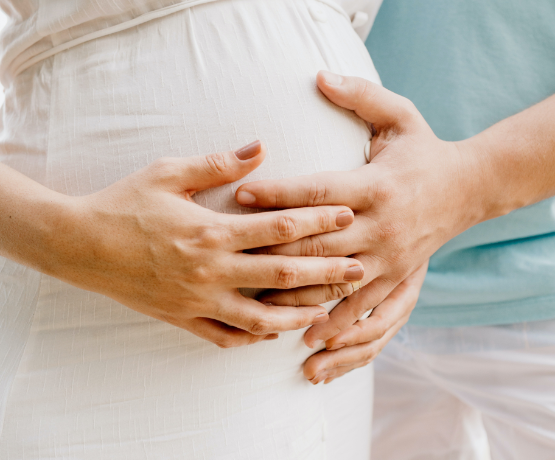Success Rates, Average Cycles, and Natural Methods to Enhance Fertility for IVF and IUI
If I’m anything like you, I put my career first and have no regrets about that. My priority in my twenties was becoming a medical doctor, so I put off marriage and family. By some miracle, at age 33, I met my husband and within 18 months of meeting, we were married. By that point, I was already nearing the dreaded “high risk” age of 35, so we decided to start trying right away. Despite everything, we couldn’t get pregnant.
After 2 years of trying, I was recommended to go through rounds of IUI. After several rounds, and at the age of 36, I was finally able to conceive my eldest son. The pregnancy was hard, but I was blessed with a healthy baby boy.
Given the challenges I had faced thus far, when my son was 5 months old, we decided to not wait and try again. I was certain that a few rounds of IUI would do the trick since it worked the first time. My body had done it once, so I hoped it would do it again swiftly and easily.
No luck.
By this point, my whole life revolved around spontaneous doctors appointments based on unpredictable cycles and hormone surges. I felt disempowered as a woman and a mother, depressed and infuriated all at the same time.
Then after 4 failed rounds of IUI, we resorted to IVF.
I won’t parse words: IVF was TOUGH. Daily injections, mood swings, weight gain, tears, uncertainty, and the stress of it all was exhausting. After a couple arduous rounds of IVF, I was able to retrieve only 4 eggs. Two of them made it to term, and they are my amazing boy/girl twins that keep me busy to this day.
So, why am I telling you my story? It’s important that you know the inside of the world of IUI and IVF. Maybe you’re already like me and part of this struggle, or maybe you’re struggling to get pregnant after trying for long enough and are on the brink of going to a fertility clinic. Today’s blog is a deep-dive into the facts surrounding the success rates of IUI and IVF.
These treatments ultimately worked for me, but when looking back on that period of my life, I feel a sense of bittersweetness. Sweet, obviously, because I have three healthy, happy children today who are my absolute pride and joy. Bitter because if I had known then what I know now, I would have done things differently. So, read this article and take my advice: there is a better way.
Success Rates of In Vitro Fertilization (IVF)
In vitro fertilization (IVF) is a widely recognized fertility treatment. IVF stands for “in vitro fertilization.” It is an assisted reproductive technology procedure used to help individuals or couples who are experiencing infertility try to conceive a child. In IVF, the process of fertilization takes place outside the body in a laboratory. It involves stimulating the ovaries using hormone drugs, retrieving the eggs, and collecting the sperm. Fertilization and embryo development take place in a lab until they are ready to be placed in the woman’s uterus using a thin catheter. After about two weeks, a blood test is done to see if the woman is pregnant. The success rates associated with IVF are often based on age groups, but there are other factors to consider.
A Woman’s Age is a Factor
Maternal age directly impacts the success of IVF. It’s widely known that a woman is most fertile in her 20’s. Studies show that women in their 20’s and 30’s have the most success when getting pregnant through IVF and other reproductive technologies. According to the CDC, the average percentages of assisted reproductive technology (ART) cycles that lead to a live birth are:
- 31% in women younger than 35 years of age
- 24% in women aged 35 to 37
- 16% in women aged 38 to 40
- 8% in women aged 41 to 44
- 3% in women age 43 and older
Take into consideration also that, like me, most women undergo more than one cycle/round of IVF before successfully getting pregnant:
- Women under 35 average 2-3 cycles for success.
- Women between 35 and 37 average 3-4 cycles for success.
- For women between 38 and 40, it may take 4-6 cycles for success.
- For women over 40, IVF success rates drop significantly, and it may take 6 or more cycles for success.
Note that women with a previous successful pregnancy have a higher chance of success with IVF. Underlying factors that are the cause of infertility are affected by reproductive health and lifestyle choices. These can affect IVF success rates as well.
If you would like our support to walk through the process step by step, we are here for you! Watch our free, on-demand masterclass here and take the action step to apply to work with us. We’ve helped countless couples like you succeed in optimizing their fertility, even when they are starting a family a little later in life.
Success Rates of Intrauterine Insemination (IUI)
IUI, or intrauterine insemination, is a fertility treatment procedure in which washed and concentrated sperm is directly placed into a woman’s uterus during her ovulation period. This procedure is performed to increase the chances of fertilization by bringing the sperm closer to the fallopian tubes where fertilization typically occurs. IUI is a less invasive and more affordable option compared to in vitro fertilization (IVF). It can be used as a standalone treatment or in combination with fertility medications to enhance the chances of pregnancy for couples experiencing certain fertility issues. Like IVF, age is a significant factor to the success rate of IUI.
- Maternal Age:
- Women under 35: IUI success rates range from 10% to 15% per cycle, with an average of 3-6 cycles for success.
- Women between 35 and 37: Success rates average around 8-12% per cycle, with 6-9 cycles for success.
- Women between 38 and 40: Success rates further decline to 5-8% per cycle, and it may take 9-12 or more cycles for success.
- Women over 40: IUI success rates drop significantly to less than 5% per cycle, and it may take 12 or more cycles for success.
- Underlying Factors:
- Factors such as the cause of infertility, the quality of sperm, and the woman’s reproductive health can influence IUI success rates. Addressing these factors can optimize the chances of success.
Average Number of Cycles for IUI Success: On average, the number of cycles required for IUI success is dependent on the woman’s age.
- Women under 35: 3-6 cycles
- Women between 35 and 37: 6-9 cycles
- Women between 38 and 40: 9-12 or more cycles
- Women over 40: 12 or more cycles
Natural Methods to Enhance Fertility
When I look back, there were clear biochemical blocks keeping me from being able to conceive naturally, I just didn’t have the education or insight to recognize them.
As a traditionally trained physician, I learned NOTHING of what I now know about natural reproduction in medical school. I was taught that fertility PLUMMETS at age 35, and that if things don’t work, you resort to IUI or IVF. There was nothing in between. There was no talk of how gut health, stress, food, nutrition, sleep, thyroid, inflammation, and much more…. affects fertility. Everything was black or white. A fire lit within me…one that drives my mission and passion today.
The good news? I am now able to share The 4 Step Fertility Formula™ with women across the globe. Our protocol has a greater than 80% success rate in women who meet our fertility criteria.
Whether or not you’re undergoing fertility treatments like IVF or IUI, you and your partner can adopt natural methods to enhance fertility and increase the chances of success. Here are some strategies to consider:
- Get and Stay Healthy:
- Follow a balanced diet rich in nutrients, including fruits, vegetables, whole grains, lean proteins, and healthy fats.
- Stay adequately hydrated and avoid excessive caffeine and alcohol consumption.
- Maintain a healthy weight as both underweight and overweight conditions can affect fertility.
- Healthy also means exercising regularly. Engage in moderate exercise regularly, such as walking, swimming, or yoga.
- Manage Your Stress
- Practice stress-reducing techniques such as mindfulness, meditation, deep breathing exercises, or engaging in hobbies and activities that bring joy and relaxation.
- Consider alternative therapies like acupuncture, which has shown potential benefits in improving fertility outcomes.
- Optimize Nutritional Support:
- Supplement your diet with fertility-friendly nutrients such as folic acid, vitamin D, vitamin E, zinc, selenium, and omega-3 fatty acids.
- Minimize Exposure to Environmental Toxins:
- Avoid exposure to toxins, such as chemicals found in certain cleaning products, pesticides, and plastics.
- Opt for organic food options whenever possible to reduce exposure to pesticides.
- Seek Emotional Support:
- Infertility can be emotionally challenging. Seek support from loved ones, join support groups, or consider professional counseling to navigate the emotional aspects of the journey.
Conclusion
Understanding the success rates and average number of cycles required for IVF and IUI is crucial for if you’re considering medical fertility treatments. I hope my personal story and the information provided can help you be better informed before undergoing any invasive treatments. At Reimagined Fertility, we help couples like you adopt natural methods to enhance fertility and optimize the chances of successful pregnancy. We offer The 4 Step Fertility Formula™ that comprehensively covers all aspects of the natural methods to enhance fertility.
Your fertility journey is unique. Stay positive and stay informed as you navigate the path to parenthood.








